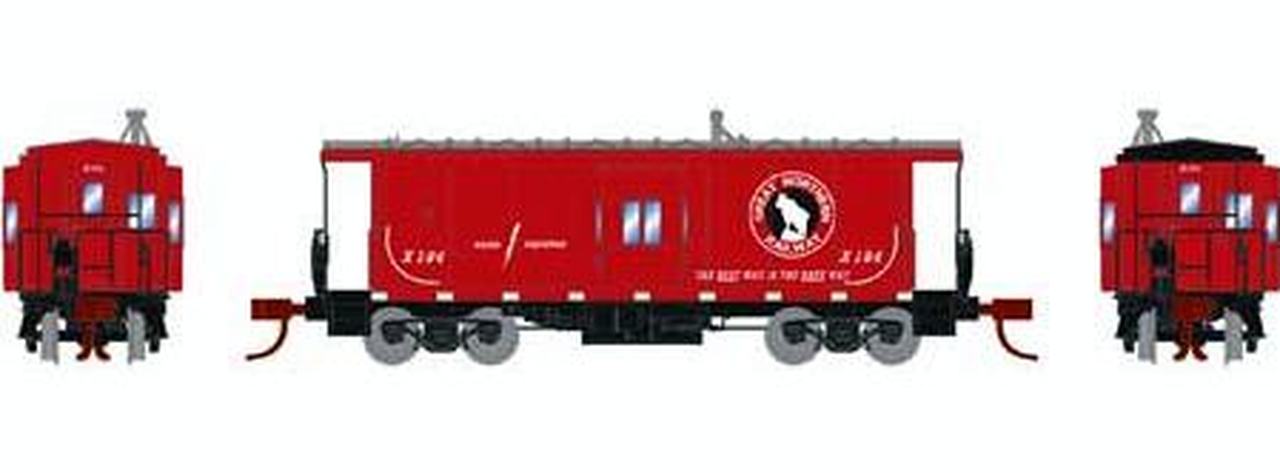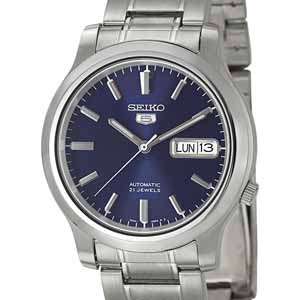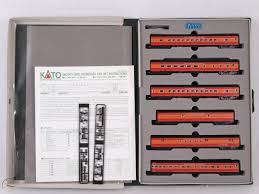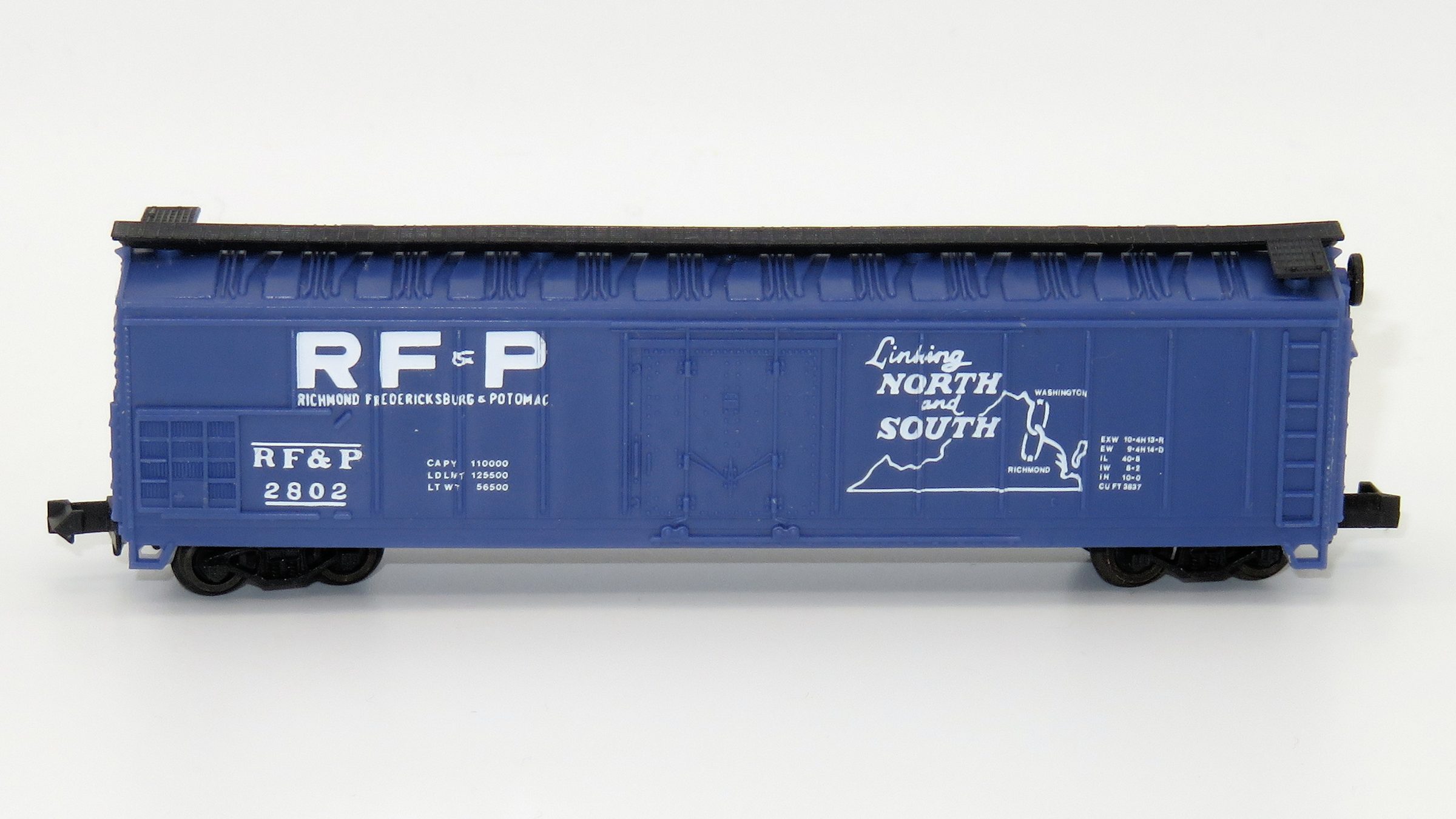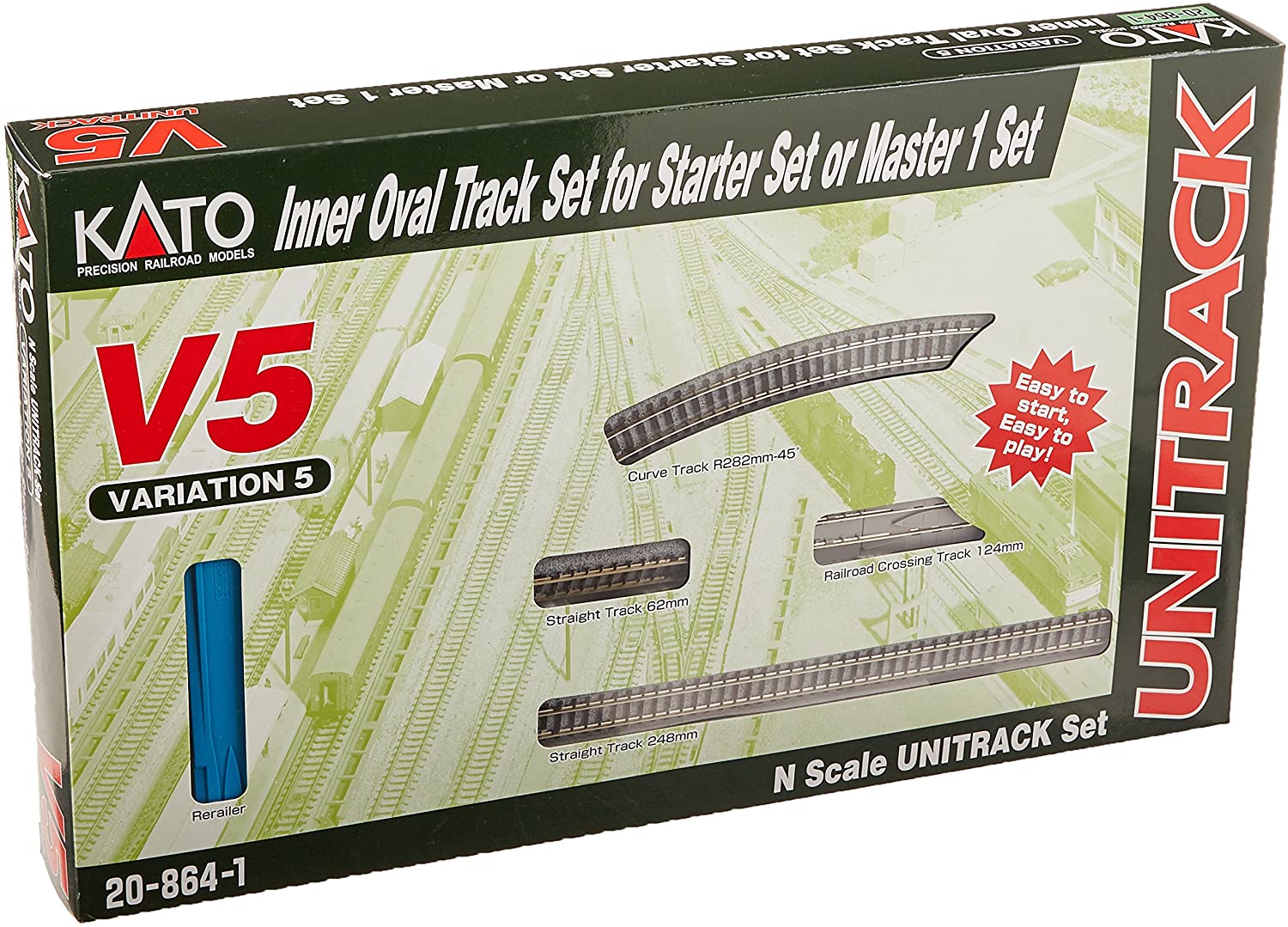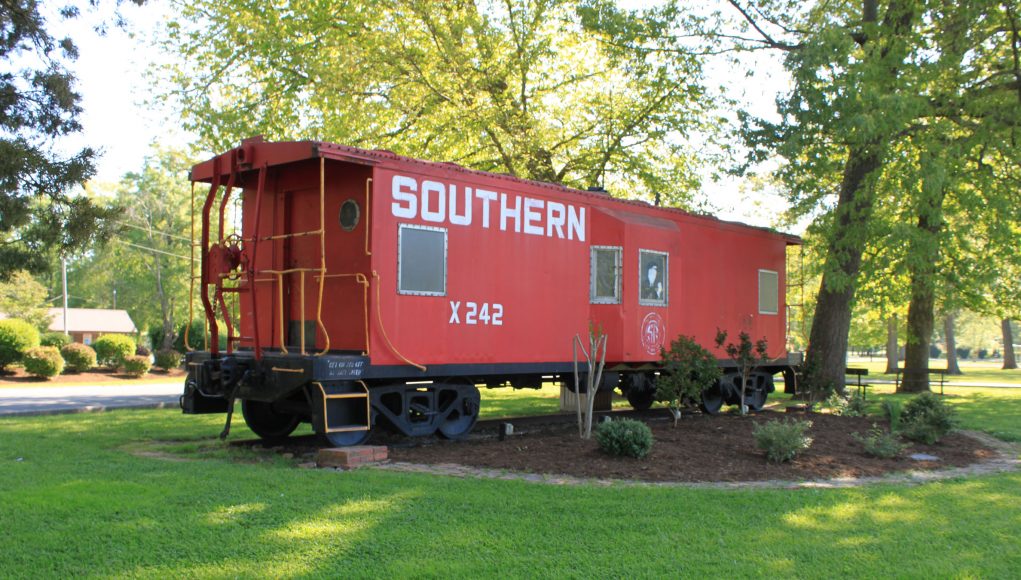Specific Item Information: Fully assembled and ready for your layout.
New truck tooling including axle-mounted generator.
Fully detailed underbody.
Prototypical details like antenna, marker lights, smoke jack and vent.
Separately applied wire grab irons.
End walkway tread.
Clear window glazing.
McHenry scale knuckle spring couplers installed.
Model Information: Model: Introduction: October 2009. ERA: 1960s to present (depending on road name). Three bodies available: C-50-7, C-50-8 and C-50-9
Features: Body mounted McHenry knuckle spring couplers,Weighted for optimum performance, Partial interior, Separately applied wire grab irons, New truck tooling including axle mounted generator, End walkway tread, Etched window screens included, Finely detailed end railing and brake wheel, Fully detailed underbody, Window glazing, Plastic/etched roof detail (antenna, marker light, smoke jack and vent) when appropriate per prototype.
Features: Body mounted McHenry knuckle spring couplers,Weighted for optimum performance, Partial interior, Separately applied wire grab irons, New truck tooling including axle mounted generator, End walkway tread, Etched window screens included, Finely detailed end railing and brake wheel, Fully detailed underbody, Window glazing, Plastic/etched roof detail (antenna, marker light, smoke jack and vent) when appropriate per prototype.
Prototype History: In a bay window caboose, the crew monitoring the train sits in the middle of the car in a section of wall that projects from the side of the caboose. The windows set into these extended walls resemble architectural bay windows, so the caboose type is called a bay window caboose. This type afforded a better view of the side of the train and eliminated the falling hazard of the cupola. The bay window gained favor with many railroads because it eliminated the need for additional clearances in tunnels and overpasses. On the west coast, the Milwaukee Road and the Northern Pacifc Railway used these cars, converting over 900 roof top cabooses to bay window cabooses in the late 1930's. Milwaukee Road rib-side window cabooses are preserved at New Libson, Wisconsin, the Illinois Railway Museum, the Mt. Rainer Scenic Railroad, and Cedarburg, Wisconsin.
When the shift was made from wooden to steel caboose construction, a new type of caboose also arrived. The new caboose design replaced the traditional roof-mounted “cupola” with “bay-windows” attached to the sides of the caboose. As freight cars grew taller, the effectiveness of cupolas as practical observation points was diminished. This was especially true on lines that suffered from low clearances and were incapable of making cupolas high enough to see over the top of the tallest freight cars. Cabooses were prone to rough handling, and many a trainman was knocked out of his perch in the cupola and injured when he fell. The new caboose design was safer as well as more effective.
When the shift was made from wooden to steel caboose construction, a new type of caboose also arrived. The new caboose design replaced the traditional roof-mounted “cupola” with “bay-windows” attached to the sides of the caboose. As freight cars grew taller, the effectiveness of cupolas as practical observation points was diminished. This was especially true on lines that suffered from low clearances and were incapable of making cupolas high enough to see over the top of the tallest freight cars. Cabooses were prone to rough handling, and many a trainman was knocked out of his perch in the cupola and injured when he fell. The new caboose design was safer as well as more effective.
Road Name History: The Great Northern was born in 1881 with the consolidation of several railroads of the northern plains under the leadership of James J. Hill. By 1893, the mainline from the Great Lakes and the Mississippi River to Seattle was complete.
The GN had two distinctly different characters. The eastern half was a largely flat, grain producing region serving cities like Fargo, the Twin Cities, Grand Forks, Duluth, Sioux Falls, Sioux City and even Winnipeg in Canada. The east end also included the iron ore rich regions of Minnesota. Half of North Dakota was blanketed by GN branchlines (21 in all) serving every imaginable grain elevator.
The western half is the mountainous portion that most people identify with Great Northern. This included crossing the northern Rockies and the even more difficult Cascade ranges. Cities on the western half included Billings, Butte, Helena, Havre, Spokane, Portland, Seattle, and Vancouver. In 1931, a connection to the Western Pacific was completed from Bieber north to Bend, Oregon. This line was disconnected from the rest of the Great Northern. They used trackage rights on the Oregon Trunk and SP&S to bridge the gap. The Cascade Tunnel, the longest on the continent at 7.8 miles, wasn’t completed until 1931. Construction included a massive sluiceway and hydro-electric power station to feed the electrified line through the tunnel and several miles of railroad on either side. This replaced the original Cascade Tunnel which was a third as long but 500 feet higher up the mountain. That replaced the original route that was another 700 feet higher, had 4% grades and 50 miles of snowsheds. All told, Great Northern had about 8,300 route miles.
The steam era was especially unkind to the Great Northern. They seemed to go out of their way to make their locomotives ugly. Belpaire fire boxes were the norm (made famous by the Pennsylvania, made hideous on the GN.) Headlights were often mounted just above center giving them a spinster look. Cab fronts were often at odd angles. The tender coal bunkers were often taller than the engines. But it wasn’t just aesthetics. GN had a knack for buying the wrong engines for the job. 150 Prarie type 2-6-2’s were so unstable at speed that they were busted down to branchline duty almost straight away and none survived after about 1930. Their first 4-8-2 Mountains built for passenger and fast freight were such a disaster, they were rebuilt into 2-10-2’s. Many railroads had built Mountains out of Mikes but no one had ever started with a Mountain and had to build something else from it. The first 2-6-6-2’s were so under-powered, the boilers were used to make Mikados instead. They did manage to build the largest, fastest, and most powerful Mikados in the country however. Their articulated fleet included 2-6-6-2, 2-6-8-0 (later rebuilt into Mikes), 2-8-8-0, 2-8-8-2 types as well as a pair of Challengers originally delivered to SP&S. Many engines were dressed up with green boilers and boxcar red cab roofs.
For the first generation of diesels, GN bought like many large railroads did: a sampling from everyone. Cab and hood units from EMD and Alco and switchers from EMD, Alco, and Baldwin populated the roster. GN’s first generation geeps and SD’s were delivered with the long hood as the front. This included their GP20’s which had high short hoods and the long hood as the front. Aside from an early black scheme for switchers, the GN fleet was delivered in Omaha Orange and green with yellow piping.
Beginning with the arrival of GP30s in 1962, the paint scheme was simplified by dropping the bottom orange band and the yellow piping. For the second generation, General Electric replaced Alco as a supplier of new road engines.
In 1962, some GN freight cars began to appear in Glacier Green which ran along side the vermilion paint adopted in 1956. In 1967, they went for a major shift. Sky Blue, white, and dark gray were joined by a new version of the Rocky the goat logo. There was talk that this would become the paint scheme for Burlington Northern. The GN name and logo was painted on a steel panel bolted the the hand railings of hood units, making it easier to remove after the merger. For whatever reason, they went with green, black and white, a version of which was simultaneously being tested on the Burlington Route. In 1970, Great Northern, Northern Pacific, Spokane Portland & Seattle, and Burlington Route merged to form Burlington Northern.
The GN had two distinctly different characters. The eastern half was a largely flat, grain producing region serving cities like Fargo, the Twin Cities, Grand Forks, Duluth, Sioux Falls, Sioux City and even Winnipeg in Canada. The east end also included the iron ore rich regions of Minnesota. Half of North Dakota was blanketed by GN branchlines (21 in all) serving every imaginable grain elevator.
The western half is the mountainous portion that most people identify with Great Northern. This included crossing the northern Rockies and the even more difficult Cascade ranges. Cities on the western half included Billings, Butte, Helena, Havre, Spokane, Portland, Seattle, and Vancouver. In 1931, a connection to the Western Pacific was completed from Bieber north to Bend, Oregon. This line was disconnected from the rest of the Great Northern. They used trackage rights on the Oregon Trunk and SP&S to bridge the gap. The Cascade Tunnel, the longest on the continent at 7.8 miles, wasn’t completed until 1931. Construction included a massive sluiceway and hydro-electric power station to feed the electrified line through the tunnel and several miles of railroad on either side. This replaced the original Cascade Tunnel which was a third as long but 500 feet higher up the mountain. That replaced the original route that was another 700 feet higher, had 4% grades and 50 miles of snowsheds. All told, Great Northern had about 8,300 route miles.
The steam era was especially unkind to the Great Northern. They seemed to go out of their way to make their locomotives ugly. Belpaire fire boxes were the norm (made famous by the Pennsylvania, made hideous on the GN.) Headlights were often mounted just above center giving them a spinster look. Cab fronts were often at odd angles. The tender coal bunkers were often taller than the engines. But it wasn’t just aesthetics. GN had a knack for buying the wrong engines for the job. 150 Prarie type 2-6-2’s were so unstable at speed that they were busted down to branchline duty almost straight away and none survived after about 1930. Their first 4-8-2 Mountains built for passenger and fast freight were such a disaster, they were rebuilt into 2-10-2’s. Many railroads had built Mountains out of Mikes but no one had ever started with a Mountain and had to build something else from it. The first 2-6-6-2’s were so under-powered, the boilers were used to make Mikados instead. They did manage to build the largest, fastest, and most powerful Mikados in the country however. Their articulated fleet included 2-6-6-2, 2-6-8-0 (later rebuilt into Mikes), 2-8-8-0, 2-8-8-2 types as well as a pair of Challengers originally delivered to SP&S. Many engines were dressed up with green boilers and boxcar red cab roofs.
For the first generation of diesels, GN bought like many large railroads did: a sampling from everyone. Cab and hood units from EMD and Alco and switchers from EMD, Alco, and Baldwin populated the roster. GN’s first generation geeps and SD’s were delivered with the long hood as the front. This included their GP20’s which had high short hoods and the long hood as the front. Aside from an early black scheme for switchers, the GN fleet was delivered in Omaha Orange and green with yellow piping.
Beginning with the arrival of GP30s in 1962, the paint scheme was simplified by dropping the bottom orange band and the yellow piping. For the second generation, General Electric replaced Alco as a supplier of new road engines.
In 1962, some GN freight cars began to appear in Glacier Green which ran along side the vermilion paint adopted in 1956. In 1967, they went for a major shift. Sky Blue, white, and dark gray were joined by a new version of the Rocky the goat logo. There was talk that this would become the paint scheme for Burlington Northern. The GN name and logo was painted on a steel panel bolted the the hand railings of hood units, making it easier to remove after the merger. For whatever reason, they went with green, black and white, a version of which was simultaneously being tested on the Burlington Route. In 1970, Great Northern, Northern Pacific, Spokane Portland & Seattle, and Burlington Route merged to form Burlington Northern.
Brand/Importer Information: Athearn's history began in 1938, when its founder-to-be, Irvin Athearn, started an elaborate O scale layout in his mother's house. After placing an ad selling the layout, and receiving much response to it, Irv decided that selling model railroads would be a good living. He sold train products out of his mother's house through most of the 1940s. After becoming a full-time retailer in 1946, Irv opened a separate facility in Hawthorne, California in 1948, and that same year he branched into HO scale models for the first time.
Athearn acquired the Globe Models product line and improved upon it, introducing a comprehensive array of locomotive, passenger and freight car models. Improvements included all-wheel drive and electrical contact. One innovation was the "Hi-Fi" drive mechanism, employing small rubber bands to transfer motion from the motor spindle to the axles. Another was the double-ended ring magnet motor, which permitted easy connection to all-wheel-drive assemblies. Athearn was also able to incorporate flywheels into double-ended drives.
The company produced a model of the Boston & Maine P4 class Pacific steam locomotive which incorporated a cast zinc alloy base and thermoplastic resin superstructure. It had a worm drive and all power pickup was through the bipolar trucks that carried the tender. This item was discontinued after the Wilson motor was no longer available, and was not redesigned for a more technologically advanced motor.
Athearn's car fleet included shorter-than-scale interpretations of passenger cars of Southern Pacific and Atchison, Topeka & Santa Fe Railroad prototypes. The company also offered a variety of scale-length freight cars with sprung and equalized trucks. The cars could be obtained in simple kit form, or ready-to-run in windowed display boxes. The comprehensive scope of the product line contributed to the popularity of HO as a model railroad scale, due to the ready availability of items and their low cost.
Irv Athearn died in 1991. New owners took control in 1994, but continued to follow Athearn's commitment to high-quality products at reasonable prices. Athearn was bought in 2004 by Horizon Hobby. Athearn was then moved from its facility in Compton to a new facility in Carson, California. In mid-2009, all remaining US production was moved to China and warehousing moved to parent Horizon Hobby. Sales and product development was relocated to a smaller facility in Long Beach, California.
Read more on Wikipedia and Athearn website.
Athearn acquired the Globe Models product line and improved upon it, introducing a comprehensive array of locomotive, passenger and freight car models. Improvements included all-wheel drive and electrical contact. One innovation was the "Hi-Fi" drive mechanism, employing small rubber bands to transfer motion from the motor spindle to the axles. Another was the double-ended ring magnet motor, which permitted easy connection to all-wheel-drive assemblies. Athearn was also able to incorporate flywheels into double-ended drives.
The company produced a model of the Boston & Maine P4 class Pacific steam locomotive which incorporated a cast zinc alloy base and thermoplastic resin superstructure. It had a worm drive and all power pickup was through the bipolar trucks that carried the tender. This item was discontinued after the Wilson motor was no longer available, and was not redesigned for a more technologically advanced motor.
Athearn's car fleet included shorter-than-scale interpretations of passenger cars of Southern Pacific and Atchison, Topeka & Santa Fe Railroad prototypes. The company also offered a variety of scale-length freight cars with sprung and equalized trucks. The cars could be obtained in simple kit form, or ready-to-run in windowed display boxes. The comprehensive scope of the product line contributed to the popularity of HO as a model railroad scale, due to the ready availability of items and their low cost.
Irv Athearn died in 1991. New owners took control in 1994, but continued to follow Athearn's commitment to high-quality products at reasonable prices. Athearn was bought in 2004 by Horizon Hobby. Athearn was then moved from its facility in Compton to a new facility in Carson, California. In mid-2009, all remaining US production was moved to China and warehousing moved to parent Horizon Hobby. Sales and product development was relocated to a smaller facility in Long Beach, California.
Read more on Wikipedia and Athearn website.
Item created by: Jenna on 2019-05-21 18:42:23
If you see errors or missing data in this entry, please feel free to log in and edit it. Anyone with a Gmail account can log in instantly.
If you see errors or missing data in this entry, please feel free to log in and edit it. Anyone with a Gmail account can log in instantly.


